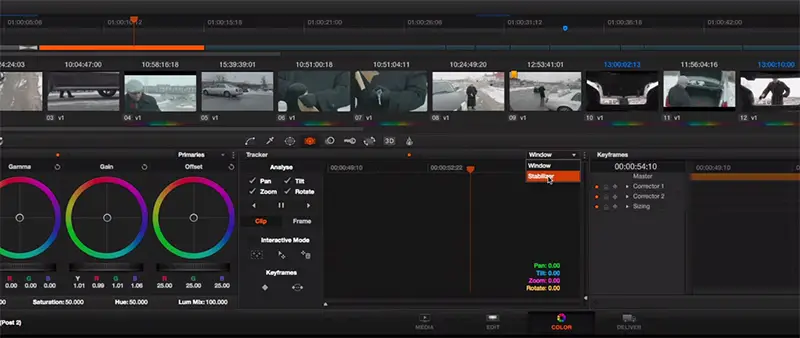

This shouldn’t take too long-maybe thirty seconds or so, depending on clip length and the amount of movement in the shot. Once you hit Stabilize, you’ll get an Analyzing load screen as the effect begins affecting your footage.

From here, you’ll see a button that says Stabilize. When highlighting a clip on your timeline, find the Stabilization option in the Inspector. Now that you’ve identified your post-production goals, let’s take a look at how to apply these stabilization effects in DaVinci Resolve. (I use this all the time as most of my footage is shot in the wind-tossed wilderness.)

It does exactly what you think it locks off the shot for a no-movement effect. If you’re working with footage that was meant to be steady-like a tripod shot that ends up with an annoying wind-based shakiness-you’ll probably lean on the Camera Lock feature in DaVinci Resolve. (Picture “ warp stabilizer” in Premiere Pro.) For instance, if your footage features some intentional camera movement, then you’ll probably want a stabilization effect that replicates a smooth track or dolly-type shot, like something you might get from a gimbal. Of course, to get the most out of either method, you’ve got to decide what “kind” of stabilization your footage might need. They both let you get in and fine-tune your stabilization to a certain level. For the other, you’ll head to the Color Tab.īefore we dive into the “how-to” of it all-is one of these better than the other? Let’s go with “not really.” I’ve had success with both methods, and I feel like they’re pretty equally effective. There are two main ways to apply a stabilization effect to your footage with DaVinci Resolve. Here’s everything you need to know about post-production stabilization in DaVinci Resolve.


 0 kommentar(er)
0 kommentar(er)
